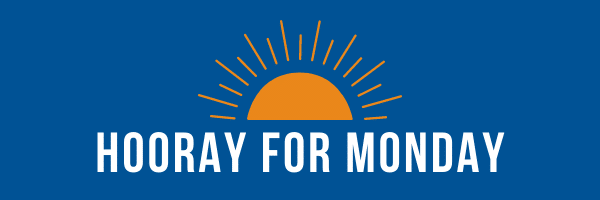By Aleta Margolis, Founder and President, Center for Inspired Teaching
Hooray for Monday is a weekly blog filled with questions, ideas, reflections, and actions we can all take to remodel the school experience for students.

For 25 years I’ve been encouraging teachers to ask the question “So what?“ every time they create and teach a lesson. Inspired Teaching has always championed relevance. “Why do I need to know this?” is one of the most important questions a student can ask, and also one of the most common questions students do ask. “Because it’s part of the curriculum.” “Because you will need to know it someday.” “Because it’s on the test.” All of these answers are familiar. Yet they are not satisfactory to students, nor to us as teachers. We learn and teach better when our content is connected to our lives.
It’s simply more engaging to teach concepts in context.
- Would your students prefer to have a half of a third of a pizza, or a half of a fourth of a pizza (assuming both pizzas are the same size)?
- What can crash test dummy videos illustrating an accident with and without seatbelts teach us about Newton’s Second Law of Motion: Force = Mass x Acceleration?
- Try having 2 minutes of nonstop conversation without using any pronouns. You will soon understand how pronouns can make a conversation more efficient and clear. (And consider the important learning opportunities a lesson on pronouns can offer about expressing one’s identity, and showing respect for the identity of others.)

Sometimes finding relevance in the subjects we teach in school is simple and straightforward: It’s pretty clear why we learn to read or tell time or calculate a tip. Sometimes, as in the examples above, we need to engage our creativity as teachers to help students and even ourselves see the relevance of the material.
With so much of life feeling scary, distracting, urgent, and important right now, and with school occurring in a disrupted fashion for nearly everyone, our students are even more hungry for learning that connects to their lives. The events of this past week have offered crystal clear opportunities to make those connections. Here are just a few examples:
- Respect and listening: On Tuesday evening we got to see the damage that can be done when someone in a position of power does not exercise the ability to listen and debate respectfully with someone with whom he disagrees.
- Reading graphs: We’ve come to rely on line graphs to let us know how our communities and our country are navigating Covid and to assess our own risks.
- US Government: We all had to memorize the names and basic powers of the three branches of government. Now, our students need to investigate questions like: How are federal judges selected and why does it matter who is on the bench? Who is in charge if the president isn’t able to lead? What does ‘peaceful transfer of power’ mean and why is this important to me personally?
- Science: Are all diseases spread the same way? What makes the spread of Covid-19 different from something like measles?
Making these connections is at the heart of what it means to prepare our students to be informed and active participants in democracy. But we know it’s exhausting and overwhelming to carry that responsibility, especially right now.
On Thursday at our Speak Truth seminar on “The Impact of Trauma on Mental Health” one student reflected, “I never thought about how teachers are put into a first-responder position.”
Last week I wrote about the importance of saying “Thank you.” It’s even more relevant today.
Thank you, teachers. You and your work matter now more than ever.
